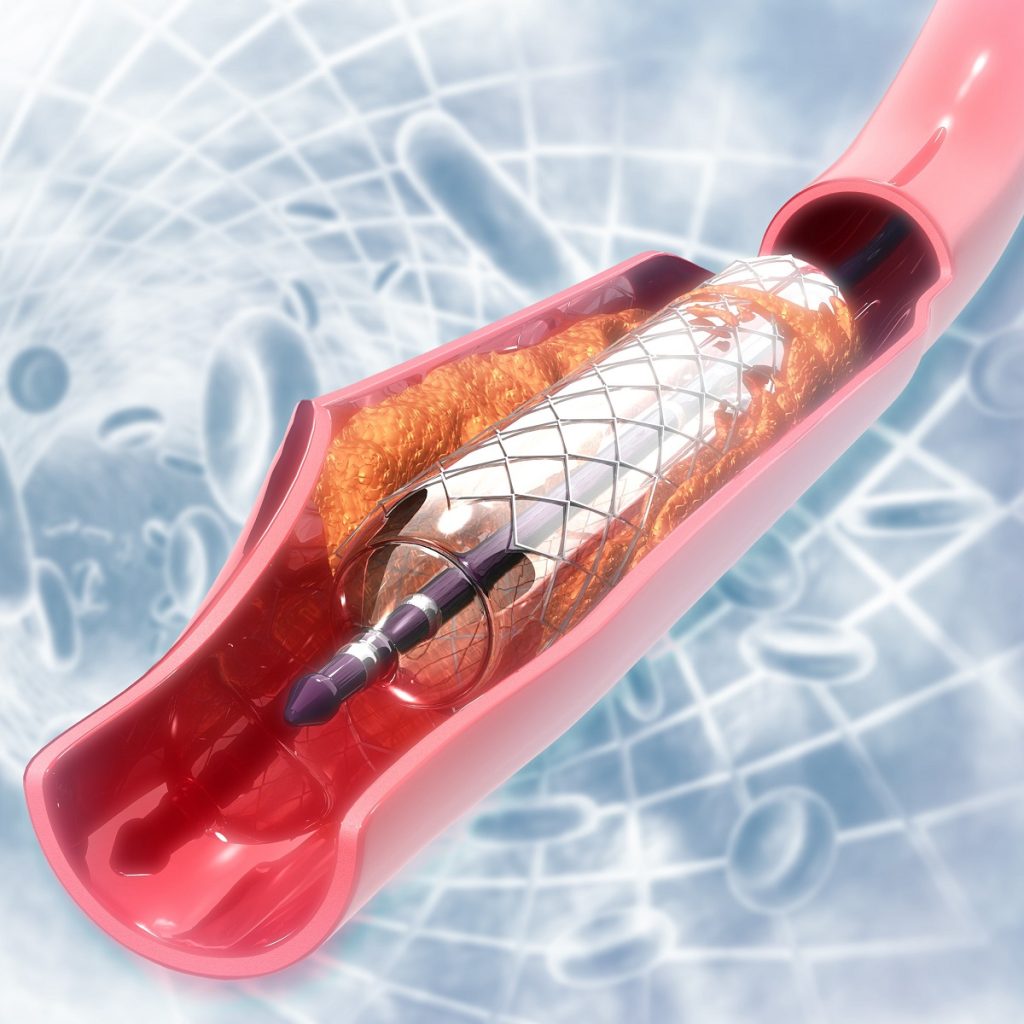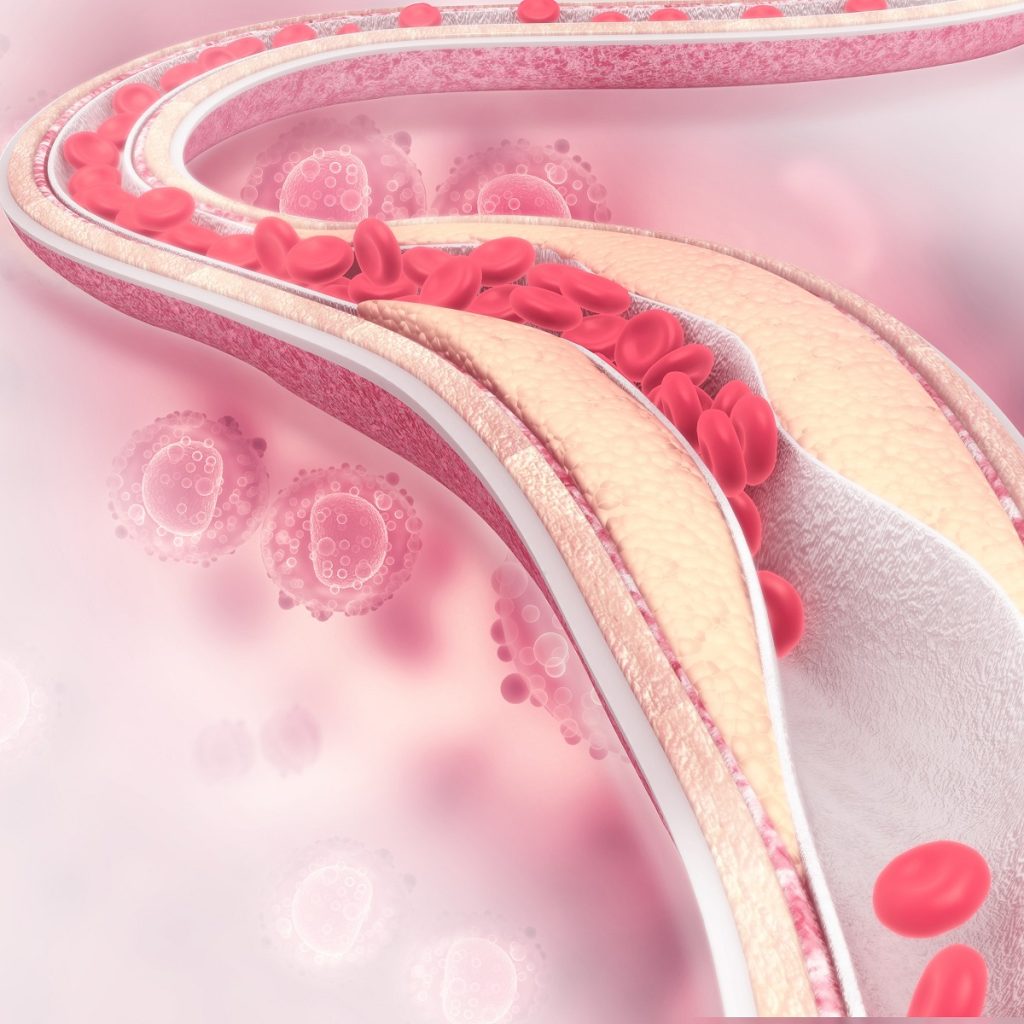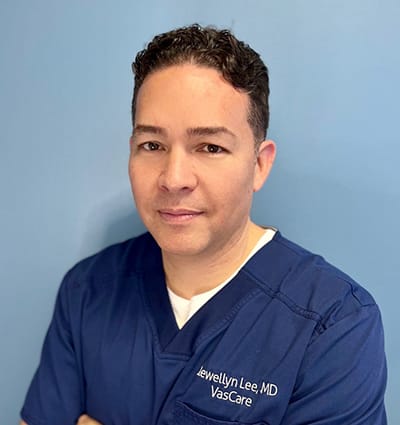
Have you been experiencing numbness in your feet, discoloration in your legs, cramping in your hips, thighs, or calves, pain from walking, or another unexplained issue with your extremities?
If so, you may be suffering from peripheral artery disease, or PAD.
Because many people with PAD don’t experience symptoms, or they chalk up their symptoms to old age, PAD often remains undiagnosed, elevating the risk of coronary artery disease, stroke, heart attack, and limb loss via amputation.
That’s why it’s extremely important to seek treatment as soon as possible if you notice any warning signs.
At VasCare’s clinic in Corpus Christi, we offer both PAD diagnosis and PAD treatment in a state-of-the-art outpatient facility.
We can help you avoid costly hospital stays, alleviate pain, and get back to doing the things you love.
Transcript
What is PAD?
Peripheral artery disease is a condition in which arteries in the legs or arms become narrowed, hindering blood flow throughout the body and causing a wide variety of medical problems, particularly in the legs and feet.
This narrowing of the arteries is most often caused by atherosclerosis, or the buildup of plaque in the inner lining of the artery. About half of Americans ages 45-84 have atherosclerosis and don’t know it, according to the National Heart, Lung, and Blood Institute.
LEARN MORE: What Is PAD? Causes, detection, outlook, and more.
Who is Most at Risk for PAD?
Known risk factors for PAD include:
- aged over 65, but often seen in younger patients
- smoking
- obesity
- diabetes
- kidney disease
- high blood pressure
- non-healing wounds or ulcers
- high cholesterol
- pain in toes or feet while resting
- swollen, painful, or discolored legs
- cramping or pain after exercising
Am I at risk of PAD? Take our simple quiz to determine if you are at risk of developing PAD.
People with PAD may experience debilitating pain, while others may not notice any outward signs of the disease. Learn to recognize the most common symptoms of PAD.
Diagnosing PAD
The first step is meeting with one of your providers who will review your medical history, current symptoms and perform a physical and exam.
One of the most basic tests we will perform in the office is an Ankle Brachial Index (ABI), which is a simple test that compares the blood pressure reading from your arm with that from your ankle. A low number on the index can be a sign blood is not flowing as easily to your lower body.
We may perform diagnostic imaging to further evaluate the arteries. Our sonography team on site is able to perform an arterial ultrasound, which evaluates the blood flow and the appearance of the arteries. There’s no prep and no pain with this procedure that uses sound waves to evaluate the arteries in your legs.
Another study we may order is a CT scan or MRI of the arteries. This is a study that takes 3D pictures of the arteries and shows the blood flow using IV contrast and often helps us plan any needed treatments.
The “gold standard” and definitive exam during which we can both diagnose and treat (if needed) is an angiogram. An angiogram involves placing a small catheter into the artery to inject contrast under an x-ray machine called fluoroscopy. This is a minimally invasive procedure that would be discussed with you during your visit with our providers and is also done in our state-of-the art facility.
How We Treat PAD at VasCare
Once diagnosis confirms the presence of symptomatic PAD, our goal is to provide the most minimally invasive treatment that can deliver a resolution.
We may find that in your case, lifestyle changes and medications are sufficient to resolve your PAD symptoms.
However, in some cases, a procedure is required to reestablish blood flow into the blocked arteries.
The following are the primary medical interventions we offer:

Angioplasty
What it is: Also known as balloon angioplasty, this minimally invasive treatment is a method of using a balloon to enlarge the blood vessel. It flattens the plaque lining the artery that is reducing blood flow against the wall of the artery to allow blood to flow more freely.
How the procedure works: Guided by an X-ray, the doctor inserts a catheter with a small medical balloon on its tip into the blocked artery. At the blockage (or at each blockage, if there are more than one), the balloon is then gently inflated, pressing the plaque up against the sides of the artery. After being inflated and deflated several times, it’s finally withdrawn from the body. Patients typically require only local anesthesia and can go about their daily routines as normal afterward.

Stenting
What it is: Like angioplasty, stenting is another method of widening arteries so that blood can reach the rest of the body. In fact, it is often used in conjunction with angioplasty. A stent is a small, wire mesh tube that is placed in the artery to help prop it open.
How the procedure works: The procedure is virtually identical to angioplasty except that after being placed in the artery, the stent is left there permanently to improve the long-term effects of the procedure.

Atherectomy
What it is: An atherectomy is designed to remove the plaque from the artery, rather than flatten it out of the way.
How the procedure works: An atherectomy is also a non-surgical intervention that utilizes a catheter to remove plaque. We have several different devices that the doctor may use depending on the type of blockage present.
Benefits of Treating PAD
Advantages of Outpatient Treatment
Dr. Llewellyn Lee – Vascular & Interventional Radiologist and Leader in Treating PAD
When you’re facing the prospect of losing limbs to PAD, you can’t risk putting yourself in the hands of anyone but the best.
Management of PAD is an extremely challenging undertaking, demanding highly skilled practitioners.
VasCare’s Dr. Llewellyn Lee is a Board Certified Vascular and Interventional Radiologist with over 20 years of experience.

Schedule a Consultation to Discuss PAD Treatment
If you have any of the risk factors of PAD or are experiencing any of the symptoms, get in touch with us and protect your health.